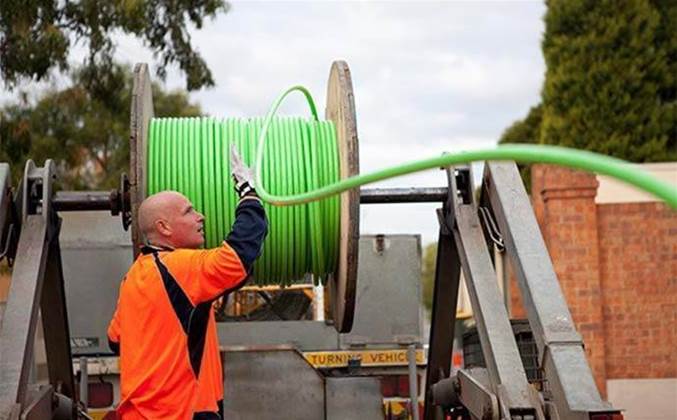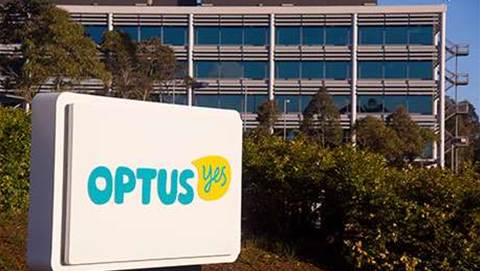NBN Co is already under substantial industry pressure to release modelling it has done for a single, flat wholesale price structure that it has not previously discussed or shared with internet providers.

Retail service providers (RSPs) have consistently asked NBN Co charge a single, flat price per user, in place of the current charging model, which has both fixed and variable components.
The variable component of the current structure in particular - a bandwidth charge called connectivity virtual circuit (CVC) - is universally unpopular.
The more customers use their internet, the more CVC a retailer has to buy. That drives internet prices higher or eats into retail margins if RSPs try to absorb the fluctuations.
Almost all RSPs went into NBN Co's current pricing review wanting the CVC construct scrapped, and to instead be charged a flat price per user connected to the NBN.
NBN Co does briefly acknowledge this in the pricing review consultation paper, albeit that flat pricing is framed as problematic and not to be actioned before November 2022.
“Some RSPs have specifically raised their concerns with CVC, particularly in an environment of high usage growth, and expressed a desire to move to AVC only pricing,” NBN Co said in its consultation paper last month.
AVC or aggregated virtual circuit is the fixed component of current wholesale charges.
However, NBN Co went on to say that an AVC-only - flat-price - structure would need to cover the cost of lost CVC revenue, and be set at a level that allowed the company to maintain standalone economic feasibility, and have money leftover to invest in its network.
NBN Co also claimed that “CVC is seen as a key retail differentiator by some RSPs in the industry” though did not cite evidence or examples for this.
Nowhere in the consultation paper does NBN Co mention that it has already modelled what any of this would look like.
The fact this modelling exists offers the potential of a considerable breakthrough for RSPs.
It also considerably changes the complexion of the pricing review, and ratchets up pressure on NBN Co to cut to the chase and focus on an outcome that RSPs want, instead of short-term changes that would only serve to drive up prices further.
But NBN Co is non-commital as to whether it intends to share the flat price modelling it has done with RSPs as part of the pricing review, or to fast-track its development ahead of other less palatable options.
“We are opening up this conversation with industry as part of Part B of the pricing review 2021 consultation paper,” an NBN Co spokesperson told iTnews.
“Our intention is to propose a commercially sustainable wholesale pricing construct based on industry feedback in the second round of the consultation [in mid Q2].
“Moving away from CVC will require a rebalancing of our wholesale charges, which we stated in the first consultation paper.
“Such a change requires engagement with the Australian Competition and Consumer Commission (ACCC) and if introduced, we would expect that it is part of a revised special access undertaking (SAU).”
RSPs contacted by iTnews were keen to see NBN Co’s flat-price model and underlying assumptions.
“The industry has been calling for flat-rate wholesale pricing aligned to different speed tiers for the best part of a decade as the current variable pricing construct simply creates complexity and is targeted at forcing progressive increases in retail broadband prices,” Vocus’ retail chief executive Antony de Jong said.
“If NBN Co has performed costings on this basis, this work should be considered publicly now as part of NBN Co’s wholesale pricing review, otherwise everyone is just avoiding the issue for another two years.
“Now is the time for NBN Co to finally show that they really are listening to RSPs and working to provide the best outcome for end users, rather than giving lip-service to customers while continuing to focus on their own revenue targets and financial business plan.
“To set NBN pricing in the best interests of Australian consumers and businesses, and to support a sustainable and competitive market for retailers, NBN Co must abolish CVC and introduce flat-rate speed tiers to meet a range of different customer needs.”
Telstra also backed calls for the model to be released.
"As we said in our submission to NBN Co, we believe the assumptions and modelling that underpin wholesale pricing decisions should be shared with industry,” a Telstra spokesperson said.
“This transparency would give greater certainty to all involved, secure the long-term sustainability of the telco industry, and help achieve the ambition of making Australia a leading digital economy.”
Optus’ vice president of regulatory and public affairs Andrew Sheridan said it was time for NBN Co “to own this issue”.
“[NBN Co needs to] plainly explain the economic realities it faces to Australian consumers and, together with industry, develop a pricing approach that provides better and more certain outcomes for consumers,” Sheridan said.




.png&h=140&w=231&c=1&s=0)






 iTnews Executive Retreat - Security Leaders Edition
iTnews Executive Retreat - Security Leaders Edition












_(1).jpg&h=140&w=231&c=1&s=0)



